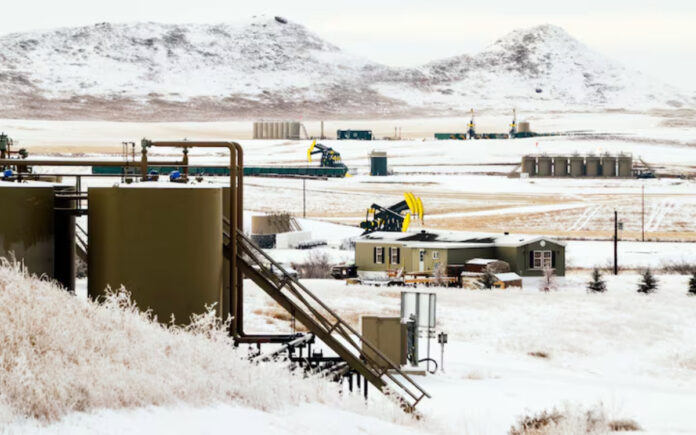Washington: Aerial survey data released by the Environmental Defense Fund (EDF) on Wednesday reveals that U.S. oil and gas basins are emitting approximately four times more methane, a potent greenhouse gas, than previously estimated by federal regulators. This finding raises significant concerns about the petroleum industry’s contribution to climate change.
The study, conducted in partnership with Alphabet Inc.’s Google, BAE Systems, and the New Zealand Space Agency, used a jet aircraft equipped with a spectrometer to measure methane emissions across 12 oil and gas basins over a span of 32 flights from June to October 2023. The project, known as MethaneAIR, produced data indicating an average emissions rate of 7.5 million metric tons per year, according to EDF.
This emissions rate is about four times higher than the Environmental Protection Agency’s (EPA) estimates, which are derived primarily from industry reports to a database. The EPA was not immediately available for comment.
MethaneAIR is a precursor to the recently launched MethaneSAT satellite, which aims to offer even more precise methane emissions estimates by continuously monitoring from space. Initial data from MethaneSAT is expected this fall. “This tranche of MethaneAIR data is a huge leap forward in terms of the capability of anything that is out there today and a small taste of what we will start to see coming from MethaneSAT,” said EDF spokesman Jon Coifman.
Also Read | Ghana Court Blocks Planned Protests Against High Cost of Living
Methane, with a warming potential significantly higher than carbon dioxide, can escape into the atmosphere undetected from drill sites, gas pipelines, and other oil and gas infrastructure. The U.S. has recently finalized regulations targeting major methane leaks from oil and gas operations, including a fee for operators failing to meet these targets. Additionally, the EU has approved methane emissions limits on oil and gas imports starting in 2030, putting pressure on international suppliers, including those in the U.S., to reduce leaks.
Also Read | Boeing Names Kelly Ortberg as CEO Amid Ongoing Challenges
The MethaneAIR data also revealed that observed emissions rates were eight times higher than the target set by 50 companies at the COP28 climate summit in Dubai, which aimed to limit methane emissions intensity to no more than 0.2% by 2030.



